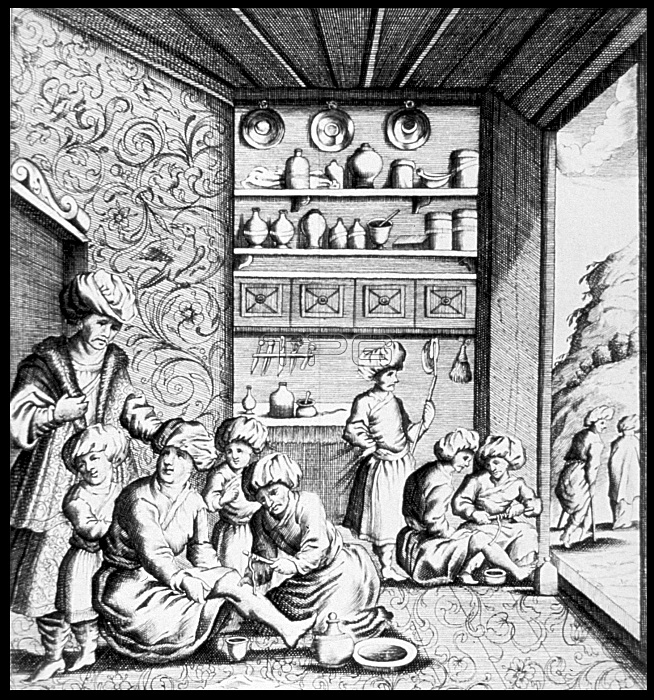
Patients are having nematodes removed from their legs. Dracunculus medinensis (Guinea worm) is a nematode that causes dracunculiasis, also known as guinea worm disease. The disease is caused by the female which, at up to 31 inches in length, is among the longest nematodes infecting humans. The most common method for removing the worm involves submerging the affected body part in water to coax the worm out. The site is then cleaned thoroughly. Slight pressure is applied to the worm as it is slowly pulled out of the wound. Full extraction of the female guinea worm usually takes several days. After each day's worth of extraction, the exposed portion of the worm is wrapped around a piece of rolled-up gauze or small stick to maintain tension. This method of wrapping the worm around a stick or gauze is speculated to be the source for the Rod of Asclepius, the symbol of medicine. Engraving appeared in "Exercitatio de vena medinensi, ad mentem Ebnsinae; sive, De dracunculis veterum", 1674.
| px | px | dpi | = | cm | x | cm | = | MB |
Details
Creative#:
TOP22175185
Source:
達志影像
Authorization Type:
RM
Release Information:
須由TPG 完整授權
Model Release:
N/A
Property Release:
No
Right to Privacy:
No
Same folder images:

 Loading
Loading